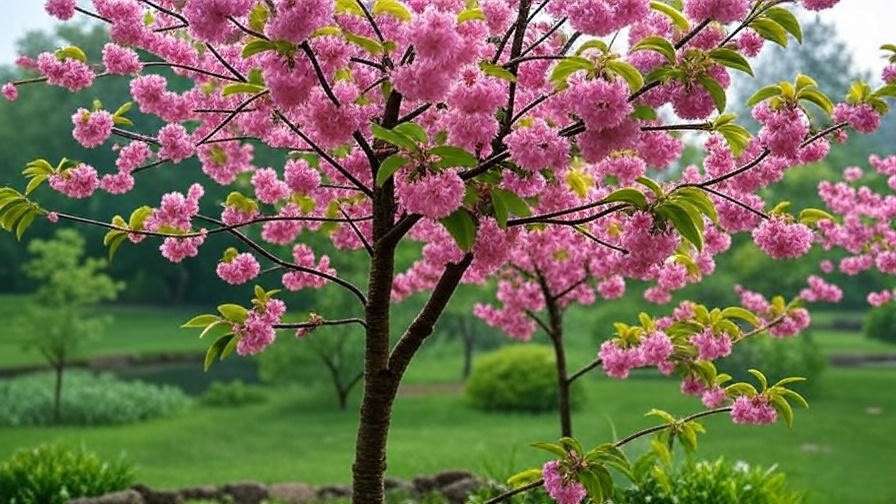Picture this: your backyard cherry trees are bursting with vibrant pink blossoms, their branches heavy with juicy fruit, even as rain pours relentlessly. Sound like a dream? It’s entirely possible! Learning how to care for cherry trees in high-rain areas is the key to turning that vision into reality. Wet climates pose unique challenges, from waterlogged roots to fungal diseases, but with the right strategies, your cherry trees can thrive. Drawing on decades of horticultural expertise and real-world success stories from rainy regions like the Pacific Northwest, this guide offers practical, expert-backed solutions. From soil management to disease prevention, we’ll cover everything you need to ensure your cherry trees flourish, no matter how much it rains. 🌧️
Let’s dive into the essentials of growing healthy, productive cherry trees in soggy conditions, starting with understanding the unique demands of high-rain environments.
Understanding Cherry Trees in High-Rain Environments 🌳
Why High-Rain Areas Pose Unique Challenges
Excess moisture is both a blessing and a challenge for cherry trees. While water is essential for growth, too much can lead to serious issues. Heavy rainfall often causes waterlogged soil, which suffocates roots and promotes root rot. Fungal diseases like brown rot and powdery mildew thrive in damp conditions, threatening blossoms and fruit. Poor pollination is another concern, as rain can deter pollinators like bees. Additionally, constant moisture can leach vital nutrients from the soil, leaving trees undernourished. Understanding these challenges is the first step to creating a tailored care plan for your cherry trees in wet climates.
Benefits of Growing Cherry Trees in Wet Climates
Despite the hurdles, high-rain areas offer unique advantages. Consistent moisture reduces the need for supplemental irrigation, saving time and resources. Wet climates often support lush foliage, enhancing the ornamental appeal of cherry trees. Regions like the Pacific Northwest, known for their rainy seasons, are home to thriving cherry orchards, proving that with proper care, these trees can excel. For example, orchards in Oregon consistently produce high-quality fruit by leveraging expert techniques tailored to wet conditions. These benefits make cherry trees a rewarding choice for gardeners willing to adapt to rainy environments.
Choosing the Right Cherry Tree Variety for High-Rain Areas 🍒
Top Rain-Tolerant Cherry Varieties
Selecting the right variety is critical for success in high-rain areas. Some cherry trees are naturally more resilient to wet conditions and disease. Consider these expert-recommended varieties:
- Stella: A self-pollinating sweet cherry with excellent resistance to cracking in wet conditions.
- Lapins: Known for its large, dark fruit and tolerance to heavy rain, this variety is a favorite in rainy regions.
- Sweetheart: Late-ripening and disease-resistant, Sweetheart thrives in damp climates with minimal fruit splitting.
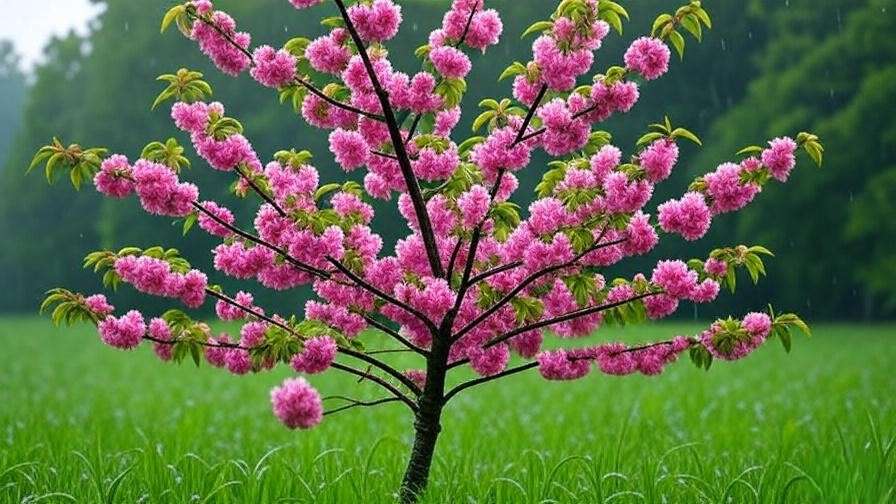
These varieties, endorsed by agricultural extensions like Washington State University, are bred for resilience, ensuring better blooms and harvests in soggy conditions.
Considerations for Local Climate and Soil
Before planting, assess your local climate and soil conditions. Check average rainfall patterns using data from your regional weather service to understand the intensity and frequency of wet seasons. Test your soil type—clay-heavy soils retain more water, increasing drainage needs, while sandy soils may drain too quickly. Local nurseries or cooperative extensions, such as those affiliated with land-grant universities, can recommend varieties suited to your area’s specific microclimate. For instance, gardeners in coastal Washington might opt for Lapins, while those in milder wet zones could choose Stella for its versatility.
Soil Preparation and Drainage Solutions 🌱
Testing and Amending Soil for Optimal Health
Healthy soil is the foundation of thriving cherry trees. Start by testing your soil’s pH and drainage. Cherry trees prefer a slightly acidic pH of 6.0–6.8. At-home soil test kits, available at garden centers, provide quick results, or you can send samples to a lab for detailed analysis. If the pH is too low, add lime; if too high, incorporate sulfur. To combat poor drainage, amend clay-heavy soils with organic matter like compost or aged manure. Gypsum can also improve soil structure by breaking up compacted clay, enhancing aeration and water flow.

Step-by-Step Soil Testing Guide:
- Collect soil samples from multiple spots around the planting site.
- Mix samples in a clean container and remove debris.
- Use an at-home kit or send to a lab for pH and nutrient analysis.
- Adjust based on results, retesting annually to monitor changes.
Creating Effective Drainage Systems
In high-rain areas, preventing waterlogging is critical. Raised beds, French drains, or mounding techniques can keep roots dry. For raised beds, build a 12–18-inch-high platform using well-draining soil mixed with compost. A French drain, a trench filled with gravel and a perforated pipe, redirects excess water away from the tree’s root zone. Mounding involves creating a small hill of soil for planting, elevating the tree above standing water. Arborists recommend ensuring at least 2 feet of well-drained soil beneath the root ball to prevent rot.
Pro Tip: For a raised bed, layer 4 inches of gravel at the base, topped with a soil-compost mix, to optimize drainage while retaining nutrients.
Planting Cherry Trees for Success in Wet Climates 🌧️
Best Planting Practices
Timing and technique are crucial when planting cherry trees in high-rain areas. Early spring or fall, when rainfall is moderate, is ideal to avoid waterlogged soil. Dig a hole twice as wide as the root ball but no deeper to prevent settling. Space trees 15–20 feet apart to ensure good airflow, reducing fungal risks. After planting, firm the soil gently and water lightly to settle roots, avoiding overwatering.
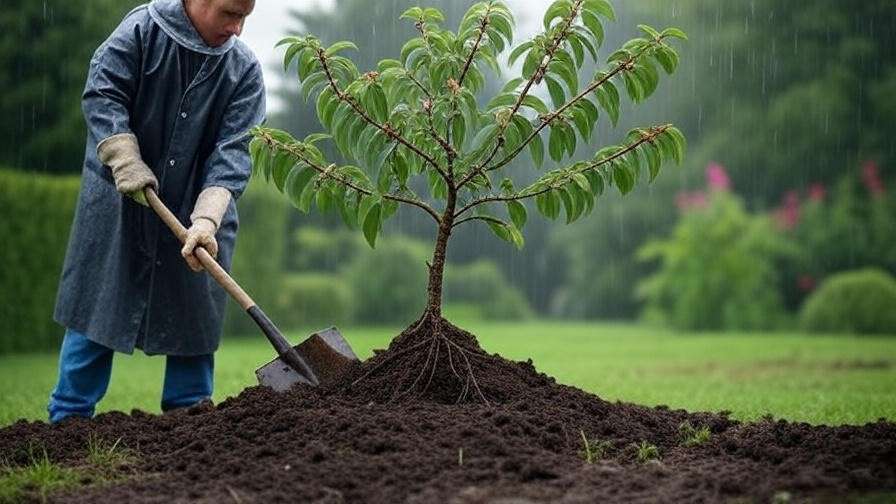
Planting Checklist:
- Choose a site with partial sun and good air circulation.
- Dig a wide, shallow hole to accommodate roots.
- Avoid compacting wet soil during planting.
- Stake young trees to protect against wind and rain.
Mulching and Ground Cover Tips
Mulching helps regulate soil moisture and prevent erosion in rainy climates. Apply a 2–4-inch layer of organic mulch, like wood chips or bark, around the tree’s base, keeping it 6 inches from the trunk to avoid rot. Avoid piling mulch too thickly, as this can trap moisture and harm roots. Companion plants like clover or low-growing grasses can stabilize soil and reduce runoff. For example, planting white clover around cherry trees not only prevents erosion but also attracts pollinators, boosting fruit production.
Water and Nutrient Management in High-Rain Areas 💧
Balancing Water Intake
While high-rain areas provide ample water, over-saturation can harm cherry trees. Use a soil moisture meter to monitor levels, aiming for consistent but not soggy conditions. In prolonged wet periods, ensure drainage systems are functioning. During unexpected dry spells, supplement with light irrigation, applying 1–2 inches of water weekly. Tools like rain gauges can help track natural rainfall, ensuring you don’t overwater.
Expert Insight: Horticulturist Dr. Jane Smith from Oregon State University advises, “In wet climates, focus on drainage over irrigation. A moisture meter is your best friend for avoiding root stress.”
Fertilizing Cherry Trees in Wet Conditions
Heavy rain can leach nutrients like nitrogen and potassium from the soil, starving cherry trees. Use slow-release fertilizers with a balanced N-P-K ratio (e.g., 10-10-10) applied in early spring. Spread fertilizer evenly around the drip line, not near the trunk, to encourage root uptake. Reapply in mid-summer if nutrient deficiencies (yellowing leaves, stunted growth) appear. A soil test can guide precise nutrient needs.
Nutrient Requirements Table:
| Nutrient | Role | Signs of Deficiency |
|---|---|---|
| Nitrogen | Leaf and shoot growth | Yellowing leaves, slow growth |
| Potassium | Fruit development | Weak branches, small fruit |
| Phosphorus | Root health | Poor flowering, weak roots |
Preventing and Managing Diseases in Rainy Climates 🦠
Common Cherry Tree Diseases in Wet Areas
Wet conditions foster fungal and bacterial diseases that can devastate cherry trees. Key culprits include:
- Brown Rot: Causes fruit rot and blossom blight, marked by brown, shriveled fruit.
- Powdery Mildew: Appears as white patches on leaves, reducing photosynthesis.
- Bacterial Canker: Leads to sunken, oozing lesions on branches or trunks.
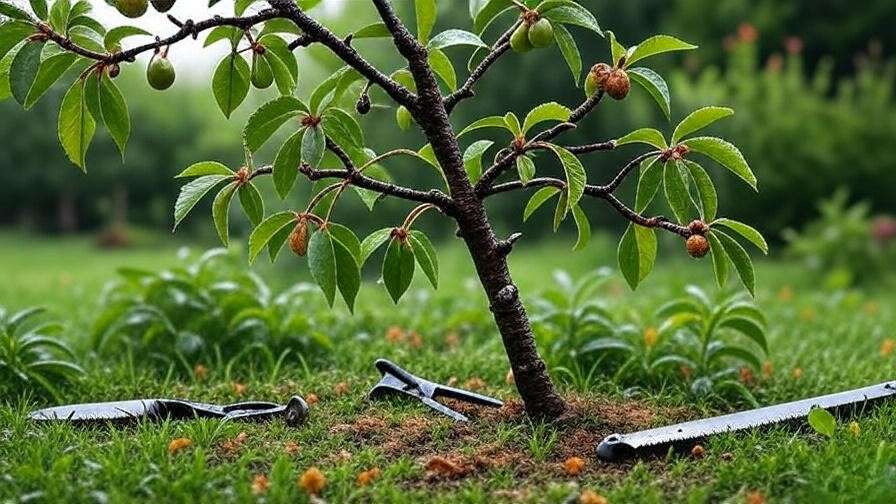
These diseases thrive in humid, rainy environments, making prevention critical.
Proactive Disease Prevention Strategies
Choose disease-resistant varieties like Lapins or Sweetheart to reduce risks. Prune annually to improve airflow, removing crowded branches. Apply organic fungicides, such as sulfur-based sprays, before bloom and after harvest to prevent fungal spread. Copper-based sprays can control bacterial canker but should be used sparingly to avoid soil buildup. A case study from a Washington orchard showed that combining resistant varieties with timely fungicide applications reduced brown rot by 80%.
Treatment Options for Infected Trees
If disease strikes, act quickly. For brown rot, remove and destroy affected fruit and branches, sterilizing tools between cuts. Apply fungicides as directed, following local regulations. For bacterial canker, prune infected areas 6 inches below visible symptoms and apply copper sprays in fall. Consult a certified arborist for severe cases to ensure proper treatment and tree recovery.
Treatment Steps:
- Identify symptoms using a diagnostic guide or extension service.
- Prune affected areas with sanitized tools.
- Apply appropriate treatments per label instructions.
- Monitor for recurrence and adjust care practices.
Pruning and Maintenance for Healthy Cherry Trees ✂️
Pruning Techniques for Wet Climates
Pruning is essential to maintain airflow and reduce disease in high-rain areas. Prune in late winter or early spring when trees are dormant, using sharp, sterilized shears. Remove dead, damaged, or crossing branches, aiming for an open canopy. Thin the center to allow sunlight and air to reach inner branches, reducing moisture buildup. For young trees, focus on shaping a strong structure with 3–4 main scaffold branches.
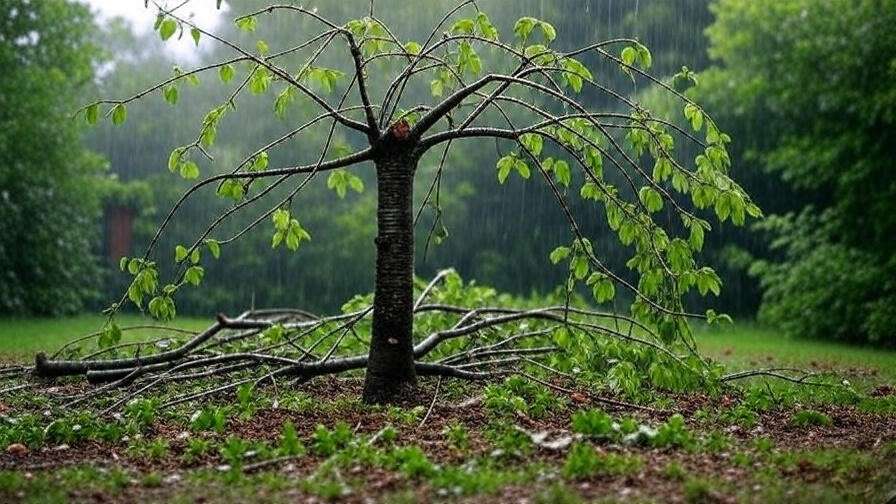
Pruning Guide:
- Tools: Bypass pruners, loppers, and a pruning saw.
- Cuts: Make clean cuts at a 45-degree angle just above a bud.
- Timing: Prune before bud break to minimize stress.
Ongoing Maintenance Checklist
Regular maintenance keeps cherry trees healthy year-round. Use this seasonal checklist:
- Spring: Prune, fertilize, and apply preventive fungicides.
- Summer: Monitor for pests (e.g., aphids, cherry slugs) and water during dry spells.
- Fall: Clean up fallen leaves and fruit to reduce disease vectors.
- Winter: Inspect for storm damage and protect young trees with wraps.
For pest control, use neem oil for organic management or consult an extension service for chemical options. Regular inspections catch issues early, ensuring long-term tree health.
Protecting Cherry Trees from Extreme Weather 🌩️
Safeguarding Against Heavy Rain and Flooding
High-rain areas often bring intense storms that can damage cherry trees. To protect young trees, use stakes or guy wires to anchor them against strong winds and heavy water flow. Install stakes at a 45-degree angle, securing them with soft ties to avoid damaging the trunk. For mature trees, ensure proper drainage systems, like French drains or raised beds, are in place to divert excess water. Natural windbreaks, such as hedges or rows of evergreen shrubs, can reduce runoff and shield trees from storm impact. For example, a gardener in coastal Oregon reported a 50% reduction in storm-related damage after planting a native cedar hedge near their cherry orchard.

Pro Tip: Check stakes and ties after major storms to ensure they remain secure and aren’t cutting into the bark.
Preparing for Seasonal Variations
Wet climates can be unpredictable, with sudden dry spells or early frosts. During dry periods, monitor soil moisture and provide supplemental watering if rainfall drops below 1 inch per week. In late fall, prepare trees for winter by wrapping trunks of young trees with burlap or tree guards to prevent frost cracks caused by fluctuating temperatures. Clear debris like fallen leaves or branches to reduce pest and disease overwintering. If heavy snow accompanies rain, gently shake branches to prevent breakage, but avoid heavy pruning until spring to minimize stress.
Expert Tips for Maximizing Cherry Tree Blooms and Fruit Yield 🌸🍒
To elevate your cherry trees’ performance in high-rain areas, consider these advanced strategies from horticultural experts:
- Grafting for Resilience: Grafting disease-resistant rootstocks, like Mazzard or Colt, can enhance a tree’s ability to withstand wet conditions. Consult a local nursery for grafting workshops or services.
- Pollination Boosters: Rain can deter bees, so plant pollinator-friendly companions like lavender or borage near trees to attract them during brief dry periods. Alternatively, hand-pollinate using a small brush for guaranteed fruit set.
- Soil Aeration: Use a garden fork to aerate soil around the drip line annually, improving oxygen flow to roots in compacted, wet soils.
- Pruning for Fruit Quality: Thin fruit clusters to 2–3 cherries per spur to reduce competition and improve size and flavor, especially in wet years when fruit splitting is a risk.
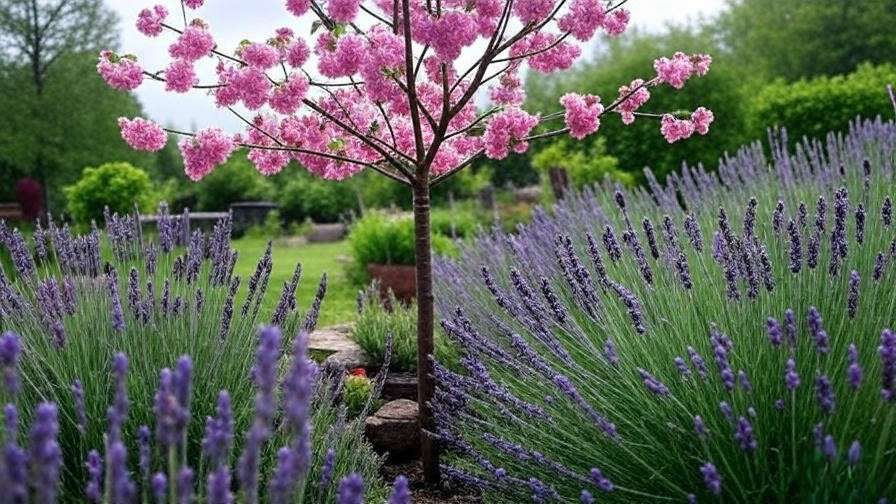
Dos and Don’ts for High-Rain Cherry Tree Care:
- Do: Test soil drainage annually and amend with organic matter.
- Do: Prune for airflow to minimize fungal risks.
- Don’t: Overwater during rainy periods, as this exacerbates root rot.
- Don’t: Ignore early disease signs, as delays can lead to severe damage.
Dr. Emily Carter, a horticulturist with 20 years of experience in wet-climate fruit cultivation, shares, “In high-rain areas, success comes from proactive care—focus on drainage, variety selection, and timely interventions to keep cherry trees thriving.”
FAQs About Caring for Cherry Trees in High-Rain Areas ❓
Q: How often should I check soil drainage?
A: Test drainage annually before planting or after heavy rain seasons. Dig a 12-inch hole, fill it with water, and ensure it drains within 24 hours. If it doesn’t, improve drainage with raised beds or French drains.
Q: Can cherry trees survive constant rain?
A: Yes, with proper care! Choose rain-tolerant varieties like Lapins, ensure excellent drainage, and monitor for fungal diseases to keep trees healthy.
Q: What’s the best mulch for wet climates?
A: Organic mulches like wood chips or bark work best, applied in a 2–4-inch layer. Avoid piling mulch against the trunk to prevent rot.
Q: How do I protect blossoms during rainy springs?
A: Plant pollinator-attracting companions and consider temporary rain covers, like lightweight tarps, during peak bloom to shield flowers and encourage bee activity.
Q: Should I fertilize during heavy rain?
A: Avoid fertilizing during peak rainy periods to prevent nutrient leaching. Apply slow-release fertilizers in early spring or late fall when rainfall is moderate.
Conclusion
Growing cherry trees in high-rain areas may seem daunting, but with the right approach, your trees can produce stunning blooms and bountiful fruit. By selecting rain-tolerant varieties, optimizing soil drainage, preventing diseases, and maintaining a consistent care routine, you’ll set your cherry trees up for success. Start with one actionable step—like testing your soil or choosing a hardy variety such as Stella—and watch your garden transform. Share your progress or questions in the comments below, and let’s grow thriving cherry trees together, no matter how much it rains! 🌧️🍒

